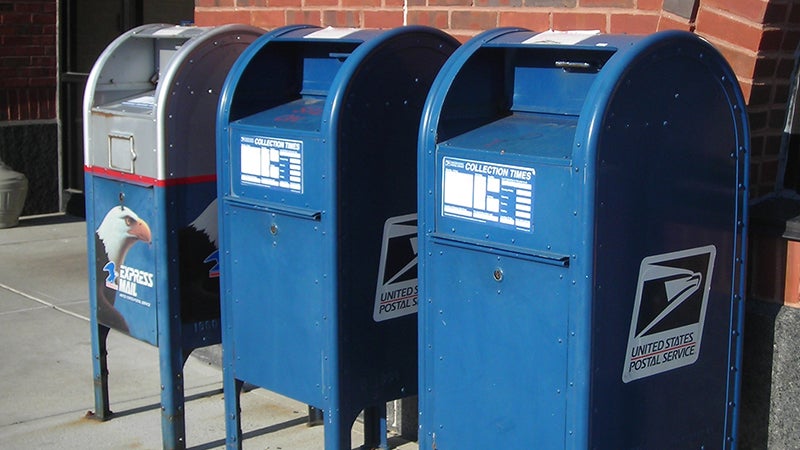From Suffolk to the World: Suffolk economy benefits from Port of Virginia
Published 7:17 pm Friday, April 21, 2023
|
Getting your Trinity Audio player ready...
|
The Port of Virginia is growing and its continued development is providing an economic boost for Suffolk.
Announcements of new projects set to start or open in 2023 tied to the port facilities are bringing investments in excess of $200 million and development of more than 3 million square feet through new builds and expansion.
POV spokesman Joseph D. Harris said with the investments being made at the facilities, it is also important to have the development outside of its fence line to support it.
In 2022, POV had its most productive year on record, having processed more than 3.7 million TEUs — 20-foot equivalent units — an increase of 5.1%.
“We made real progress in 2022 and it was another very solid year for volumes,” said Stephen A. Edwards, CEO and executive director of the Virginia Port Authority. “Our service and performance levels continue to improve and each quarter our truck, chassis, rail and vessel performance metrics advanced.”
The port achieved three of its top four months for container volume in 2022, with trade volumes peaking in May at an all-time high of 341,611 TEUs.
The dividends from this growth spilled into Suffolk with the announcement of five projects set to begin or be completed in 2023, along with the development of the new Port 460 project that won approval late in the year.
These projects announced in coordination with the Port of Virginia came throughout the year and include:
• February: UNIS Co., a 910,000 square feet new build in the city. The investment in the development was not announced, but the company spent $867,100 for the property. There was no estimate on the number of jobs to be created when it opens in 2023.
4May: Birdsong Peanuts, a facility expansion adding about 10,000 square feet and doubling the size of its offices with a $25.1 million investment. No estimate provided on the number of jobs to be created.
4July: Massimo-Zanetti Beverage, an investment of $29.1 million to expand its facilities that will create 79 new jobs. Size of the expansion was not provided.
4October: Lowes, investing $75 million in a new 1.2 million square foot facility that will create 100 new jobs.
4December: MSI, an investment of $61.5 million for a new 550,000 square foot facility that will create 80 new jobs.
While Harris said there is no data on the volume these operations in Suffolk will bring to POV, he said they are being developed because of the proximity and availability of the port’s facilities.
Suffolk Economic Development Director Nic Langford said the Port of Virginia is one of the key economic engines for the Hampton Roads region.
“The port’s recent growth and plans for future expansion continue to provide a pipeline of new projects ranging from industrial, logistics, commercial, mixed-use, and multifamily developments,” Langford said. “The new developments produce jobs and contribute to the tax roll that is required for a city the size of Suffolk to continue to provide quality services to its citizenry.”
He went on to say this provides funding for emergency services, police, fire, public schools, roads, water, sanitary and storm sewer, and quality of life projects such as parks, trails and libraries.
“They are all connected, in some way or another, to the Port of Virginia and other regional economic drivers,” Langford said.
The port’s website lists 10 current operations that use its services that have more than nearly 1.4 million square feet of space in Suffolk. These include California Cartage Co., Cargoways Logistics, Coastal Logistics Group Inc., General Service Co. Inc., Georgia Partners Cold Storage, Mar-Ja Inc., Pacorini, Suffolk Cold Storage, Virginia Cold Storage and Windspeed Logistics/Cowan Systems.
Harris credited Suffolk’s leadership for its interest in working with Port of Virginia many years ago for the development that is now coming to the city.
In his 22 years at POV, he said he has seen how the relationship between the city and the port developed.
Harris recalled years ago officials from Suffolk coming to the POV’s leadership to look at opportunities for development through building off trade.
Suffolk got a boost from its first business cluster that developed here, which is known as the coffee cluster.
One successful coffee producer located here and then others followed suit after seeking their success, Harris said. He went on to explain that these productive clusters are often the way localities grow and develop, noting there are others in the region that also are building off of the availability of the port.
Companies “see one take off and have success and others will follow,” he said.
Additionally, Harris credits the success Suffolk is seeing on a “very progressive business climate.”
“I credit Suffolk with having that kind of open-minded approach to the projects,” he said.
Harris said the logistics business is growing, as is the Port of Virginia. He said the growth experience is a “nature progression for Suffolk and the region.”
He pointed to the up-side of logistics, which offers year-round work, good pay and good benefits.
Suffolk and the region are good locations because of the workforce that is available. He noted a lot of people who are in the area, but leaving the military, have good opportunities with these positions — whether they be on the floor of a facility or in technology handling the orders so they get to their destinations.
Development at Port of Virginia
Harris said a lot of improvements are underway at the Port of Virginia to make it the nation’s top facility.
The port’s focus on its sustainability program and becoming a net-zero carbon emissions operation by 2040 also advanced. New capital projects using electric equipment coupled with power purchase agreements from exclusively clean energy production has the port on track – and in some areas ahead of schedule – to meet its 2040 goal.
“To ensure that we remain an economic engine, we are investing billions of dollars to create one of the fastest-growing and most technologically-advanced port complexes in the world,” Edwards said. “Now, we are coupling that investment with a twenty-first century approach to sustainability. The Port of Virginia is firmly committed to becoming a net-zero operation by 2040. Since announcing this commitment last year, we have a really good start and are making progress.”
Edwards attributes the successful year to multiple factors: an experienced operations team, constant preparation, efficiency, consistency and the Virginia Model.
“We own and operate the terminals and the Hampton Roads Chassis Pool and this allows for quick decision making that ensures we are doing the right thing for the customer within the capabilities of the operation,” Edwards said. “The users of The Port of Virginia have come to understand the Virginia Model, its benefits and the role it plays in our success cannot be overstated.”
The port is expanding its assets and building the benefits of the Virginia Model by investing in both long and short-term projects aimed at driving efficiency, capturing more cargo and preparing for the future. These projects include:
• NIT North: Renovate, expand and modernize the North Berth at Norfolk International Terminals (NIT) and create capacity for 1,400,000 TEU. This includes installation of new ship-to-shore cranes and a reconfigured container stack yard supported by remotely-operated, semi-automated, rail-mounted gantry cranes. This operation will mirror our operations at the South Berth of NIT and Virginia International Gateway. This project will be completed in two phases: phase I in 2025 and phase II in 2027.
• Dredging: Deepening (to at least 55 feet) and widening the Norfolk Harbor and commercial channels to safely accommodate fully-laden ULCVs (ultra-large container vessels) and ensure safe, two-way movement of these vessels. Scheduled for completion in 2025.
• NIT Central Rail Yard: Expanding the Central Rail Yard at Norfolk International Terminals (NIT) to accommodate 470,000 additional annual TEU. When complete, the terminal will be able to accommodate 1,100,000 annual rail TEU and the port will have an annual rail TEU capacity of more than 1.8 million units. Scheduled for completion in 2024.
• Offshore Wind: The port is in the process of preparing Portsmouth Marine Terminal (PMT) to become the US East Coast’s logistics hub for the offshore-wind industry. The port has leased PMT to a pair of companies that will use the terminal as the staging and pre-assembly area for the components needed to develop a large-scale offshore wind farm off the coast of Virginia Beach. The terminal will be ready for occupancy in 2024.
“We are listening to our customers and cargo owners and are always looking for ways to improve how we process ships and move cargo,” Edwards said. “When we do this well, confidence in The Port of Virginia increases. The results are growing volumes and expanding businesses that help drive the state’s economy and job creation throughout Virginia.”
A recent economic impact study from The College of William and Mary shows that the Port of Virginia helps to create more than 400,000 jobs, generates $92 billion in total economic impact throughout the Commonwealth on an annual basis and is a significant contributing factor in Virginia being ranked “Best State for Business” in 2019, 2020 and 2021 by CNBC.






